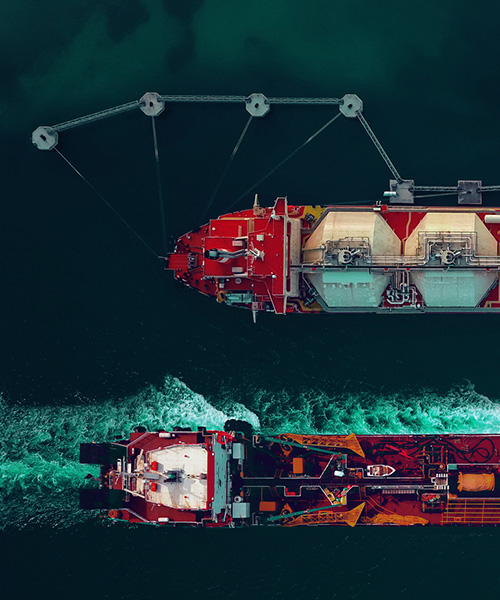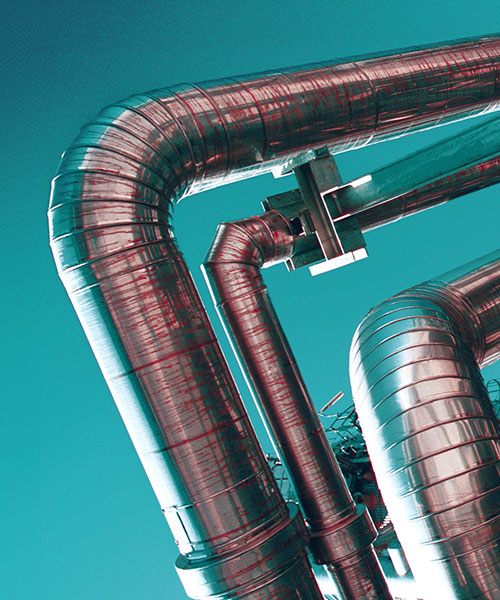February 01, 2024 • 4 min read
Natural gas: Why decarbonization initiatives are worth the investment
In a world committed to decarbonization by 2050, we consider the future for natural gas
Natural gas is under scrutiny. When we extract natural gas, process it, transport it, and use it to generate electricity, fuel vehicles and power industry, both CO2 and methane are emitted into the atmosphere.
“Given we need to reduce these emissions, there are doubts over whether natural gas should form part of our energy mix moving forward,” says Jim Lenton, Senior Vice President and Global Sector Lead, Upstream and Midstream.
“These doubts are magnified each time investments are made in natural gas when technologies such as solar and wind power can generate renewable energy, without emitting CO2 or methane in the process.”
So, are investments in natural gas projects still justified?
Displacing our most CO2 and methane intensive energy sources
“We’re transitioning away from fossil fuels, which is shifting the dynamics of our energy mix,” says Lenton. “However, this transition hasn't progressed enough to satisfy all our energy demand today.
“We still depend on traditional energy sources, such as natural gas, to fuel power stations, furnaces and transport, and heat our homes. We can’t stop using this energy overnight, so we need to make decisions that result in the lowest possible greenhouse gas emissions.”
Lenton’s role at Worley involves helping energy producers explore the viability of natural gas investments, and that means examining how natural gas stacks up against its alternatives.
“According to the IEA, natural gas is the cleanest burning fossil fuel,” he says. “Using natural gas to produce energy emits less greenhouse gas emissions than coal or oil. At the same time, natural gas remains well suited to energy intensive industries that need a flexible fuel supply, which can rise and fall to meet demand.”
But with continuing investment into renewable energy, what is the future of natural gas?
“In the growing number of cases where solar, wind and battery storage are feasible to supply reliable energy, new investments in natural gas rarely make sense,” explains Lenton. “But the two aren’t necessarily in competition. Natural gas complements the variability of renewables, providing a flexible power source when conditions for renewables aren’t favorable, and where storage systems aren’t yet able to meet energy demand for long periods of time.
For those situations, we still require the least emissions intensive alternative to shoulder the load. And that’s natural gas, but not necessarily as we know it today.
What steps can producers take to decarbonize natural gas?
If natural gas is set to remain in our energy mix, we need to decarbonize the processes involved in extracting, processing and using it.
“It’s vital that we tackle the fugitive emissions of natural gas,” Lenton says. “Typically, these unintended methane leaks occur at well sites where gas is extracted. Leaks can happen because the tightness of all gas connections is difficult to guarantee. Fugitive emissions can also occur when liquified natural gas (LNG) is transferred between storage systems.
“Reducing these emissions is critical, because each leak erodes the environmental benefits of burning natural gas instead of coal or oil,” continues Lenton. “And this is magnified by the fact that methane is a more potent greenhouse gas than CO2.
“To reduce the likelihood and severity of these emissions, we inspect the sources and use methane detectors to visualize the leak locations. Then we find ways to prevent them from happening.”
But there’s even more we need to do. Existing liquefaction facilities can replace conventional combustion technology with electric-driven technologies. This allows operators to use lower carbon or renewable electricity to produce LNG. And we can also capture the CO2 produced during the gas liquefaction process and bury it deep underground.
“Carbon capture and storage (CCS) technology is providing a pathway for the energy transition by reducing carbon emissions from existing operations,” says Lenton. “CCS involves separating or capturing CO2, and sending it by pipeline into underground wells, where it’s injected into a deep reservoir. This traps emissions underground, rather than releasing this CO2 into the atmosphere.”
Competing on the sustainability credentials of natural gas
“Customers will soon refuse to buy natural gas that’s been produced in a CO2 intensive way,” says Lenton. “By then, it will be too late for producers with a higher CO2 footprint to catch up. They won’t have a market to sell to.
“And from a societal point of view, all our sources of global emissions matter,” Lenton continues.
“The more we can displace the most emissions intensive sources of fuel in our energy systems, the better. This means expanding our investments in renewable electricity, renewable hydrogen and lower carbon fuels. And in situations where they aren’t yet feasible, the IEA’s Sustainable Development Scenario depends on a continued role for decarbonized natural gas.”
For all its complexity, Lenton believes the energy transition is about incremental improvements across every aspect of our energy mix.
“No energy producer can afford to sit idle, because the cleaner burning characteristics of natural gas alone won’t be sufficient for the world to meet the goals of the Paris Agreement. We need to invest in reducing CO2 and methane emissions from the moment we extract natural gas, knowing that the future will favor producers that decarbonize their processes.
“The world needs natural gas today, and tomorrow. But it’s time for a revolution in how we produce it.”








